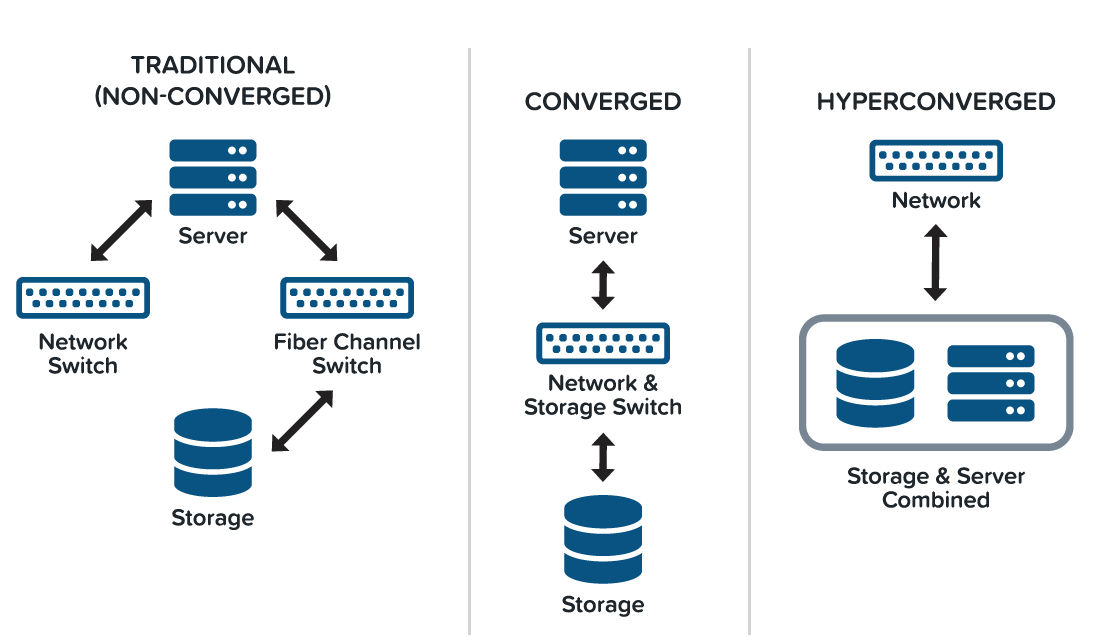Converged, Hyperconverged, and Hybrid Hyperconverged explained
To “converge” is defined as “to gradually change and come together or develop something in common.” Hyperconvergence takes this one step further as it moves past coming together and merges things into one. This is somewhat analogous to baking a pie—a “converged” pie would have all of the ingredients coming together, and the baker could pile them all together and taste the pie. Each ingredient, or in this case different systems and hardware, can be changed out for a different one. The baker could switch the sugar for cinnamon. In a hyperconverged system, the ingredients are all mixed together and baked, which means that the ingredients cannot be changed. In a hyperconverged system, your “cluster” of processors, operating system storage, and video storage are “baked” together, meaning that if more of any part of the overall cluster needs to be increased, you are forced to buy a second cluster.
Hybrid hyperconvergence gives the best of both worlds. You still have a baked pie, but you can add as much ice cream on top as you wish; in the systems world, our “ice cream” is the video storage. With HHCI, you can increase this singularly critical part of a video surveillance system without any need to spend additional funds on processing power or operating system memory. This provides significant cost savings.

REVOLV – Hybrid Hyperconverged Infrastructure
REVOLV is this hybrid hyperconverged system, and each product in the family (DEEPSTOR Lite, DEEPSTOR, and DEEPSTOR+) brings the user the power of all that has been described above. REVOLV uses the best-in-class servers from Dell, specialized switching from Alcatel-Lucent Enterprise, powerful SAN storage from Dell EMC, and the latest hypervisor technology from VMWare. REVOLV also gives the user a unique piece of software called HARMONIZE, allowing the HHCI to be managed from within the video management system. This management includes communication as the video management system works with REVOLV to provide information on predictive system failures, monitoring of critical system metrics, and allocated resource usage. HARMONIZE also provides the user to work within a graphical user interface they likely see and understand (i.e. the video management system).
REVOLV was designed to provide a true hHCI platform that offers cost savings with the 5-year total cost of ownership reductions, specific ease of use within a security system setting, system commonality with IT systems likely in current use such as VMWare, high availability and overall data and system redundancy. Unlike many providers, BCD will use licensing and even equipment (subject to evaluation) already in use by a user within REVOLV. By choosing partnerships with Dell and VMWare, the user is assured that service and support are always available beyond what BCD can provide when needed.
REVOLV’s use of hHCI, along with a company of seasoned security professionals, means a product that can be used by security now, as well as a product that can take security into the future.
Curious about REVOLV and HHCI? Let’s talk! Email: revolv@bcdinc.com
